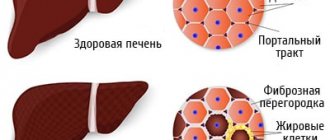- The designation HCT in a blood test is an indicator of the hematocrit value and is included in the parameters of the general examination (CBC);
- Other abbreviations – Ht, Crit, Hematocrit, PCV ( Packed C ell Volume )
- Hematocrit is the ratio of the volume of red blood cells, that is, red blood cells, to the liquid part of the blood (plasma);
- Red blood cells - cells containing hemoglobin, carry oxygen, and the hct index in the general analysis shows the usefulness of this process;
- Studying the hematocrit level is necessary to exclude or diagnose anemia, the degree of dehydration, as a monitoring step during treatment.
What does hematocrit show?
This is the volume of red blood cells in relation to the fluid mass of the blood, but taking into account the size and type of red blood cells. A huge number of processes in the body depend on red blood cells, since it is red blood cells (RBC) and the hemoglobin contained in them that deliver the necessary oxygen to cells.
It may seem that the hematocrit level and the volume of red blood cells in the blood are the same value. This is partly true, but only in the case when at least 70% of all red blood cells are of normal size, that is, no more and no less than 7-8 microns in diameter. These types of RBC are classified as normocytic, that is, complete, carrying a sufficient amount of oxygen.
This blood test should be considered in conjunction with other red blood cell indices so that the hematocrit data will be most useful and provide information to determine a treatment plan or select missing micronutrients.
Healthy red blood cells and abnormalities
When studying hematocrit, it is clearly visible that red blood cells differ in size. Such heterogeneity is considered normal, called anisocytosis, and is not a threat as long as the difference between healthy and altered red blood cells does not exceed the norm. A number of pathologies, including micronutrient deficiency and the consequences of their deficiency , alter the normal ratio between mature and non-functional red blood cells. When there are more red cells with atypical sizes, a blood test reveals deviations from the norm in hematocrit.
Hematocrit is reduced
This occurs due to the presence of microcytes in a larger volume than acceptable. The number of red blood cells in the test results is determined to be normal, but the distribution density of RBCs is reduced due to their small size.
Elevated hematocrit values
If there are more excessively large cells (macro- or megalocytes) among the red blood cells in the blood, hct indicators increase, but the total number of red blood cells themselves is determined to be insufficient.
HCT levels above 55% require close attention in blood tests and further diagnostics.
Consequences of low platelet count
In a state of low platelet count, disorders subsequently develop, which include frequent bleeding (menstrual and nosebleeds), while the bleeding time increases significantly and becomes difficult to stop. Sudden gum bleeding may develop (not everyone does). Blood clots may be found in urine or stool. Petechiae (red dots resulting from damage to the capillary wall) appear on the skin of the lower extremities, most often the legs. Even minimal damage leads to the formation of ecchymoses (bruises), when normally a bruise would not appear.
The severity of symptoms directly depends on the platelet count. The fewer platelets, the more severe the clinic. If the platelet count is very low, internal bleeding into the digestive tract or even bleeding into the brain may occur.
Even in the presence of a mild clinic, it is recommended to consult a general practitioner in order to prevent this condition.
What affects hematocrit
There are many reasons explaining the fluctuations in this indicator, but all of them can be divided into two parts. This is an insufficient intake of micronutrients into the blood and/or their incorrect absorption, as well as diseases: chronic, systemic, autoimmune. Both reasons are closely related, since impaired metabolism of useful substances leads to a number of pathologies, and such preconditions are observed not only in the aspect of the hematopoietic system. However, it is in the formation of blood quality that micronutrients play an extremely important role.
Diseases, consequences of treatment
Any pathology always has a reason, and most often it is an imbalance of micronutrients, metabolic disorders, sometimes aggravated by lifestyle. Less commonly – autoimmune reactions of the body and the administration of drugs prescribed in the course of treatment of various diseases.
The following diseases and methods of combating them are a priority for diagnosis if low hematocrit values .
— anemia – various types of this pathology occur against the background of a lack of a group of basic micronutrients or when their absorption is impaired;
- acute bleeding - both in injuries and in chronic forms;
- cirrhosis of the liver - the organ is the main “filter” of the blood, participates in the process of erythropoiesis, supplying the red bone marrow with the necessary iron for the formation of red blood cells;
- kidney pathologies - this organ produces the hormone erythropoietin (hemopoietin), also necessary for the formation of fully functional red blood cells;
- oncological diseases - affect the functioning of all body systems, one way or another, affecting the production of red blood cells;
- hydration - excess fluid in the body, also after drips with saline or other intravenous fluids.
Elevated hematocrit is characterized by another group of diseases and conditions:
-COPD – chronic obstructive pulmonary disease. Lack of oxygen and hypoxia directly affect the quality of gas exchange, leading to a weakening of antioxidant protection. Oxidative stress, in turn, reduces the efficiency of the transport function of red blood cells and changes the structural and functional state of red blood cells as a whole.
- heart failure - especially with a tendency to aggregation (sticking together) of red blood cells. Blood microcirculation is disrupted, swelling appears, and the quality of metabolic processes is lost;
- polycythemia - excess production of red blood cells;
- kidney disease, tumors - increased production of the hormone erythropoietin occurs;
-dehydration is dehydration, a reversible condition that can occur with any poisoning, injury, or during diabetes therapy.
It is worth noting that fluctuations in hematocrit do not always indicate pathology or impaired metabolism of vitamins and nutrients. HCT test results are closely related to fluid imbalance in the body, and these conditions are inevitable during pregnancy. During the gestation period, the value often drops below normal and this phenomenon is normal, since the expectant mother’s body is often swollen. When there is excess fluid in the tissues, the liquid portion of the blood also increases. Against this background, the hct volume looks reduced. There is no reason for concern, since the absolute values of red blood cells and in particular hemoglobin remain unchanged.
On the contrary, an increase in hct is often observed in smokers, as in the case of COPD, this is due to a lack of oxygen supply to cells.
Micronutrient deficiency
Iron and vitamins B9 and B12 play a critical role in maintaining a healthy hematocrit level.
— iron is an element involved in the formation of hemoglobin, which is part of the red blood cell and carries oxygen along with the blood, an essential element of most reactions in the body, a priority important part of cellular nutrition;
-vitamin B6 is water soluble, like the entire B group, that is, it does not accumulate in the body. Together with iron, it is required for the synthesis of hemoglobin;
— vitamin B9 or folic acid is an extremely important element for growth, development, in particular, of blood cells, the full functioning of the circulatory system, and immunity;
— vitamin B12 – a group of cobalamins. Actively affects hematopoietic processes; a lack of this vitamin can provoke megaloblastic anemia.
Both vitamins B9 and B12 are required for normal DNA synthesis and cell division. All four micronutrients (B8, B9, B12 and iron) are key, essential elements for meeting the needs of the hematopoietic system. Other compounds are also important, but their role can be considered secondary, auxiliary. These are copper, calcium, tocopherol (vitamin E), Omega-3 and Omega-6 fatty acids.
General information
Platelets are granulocytic blood cells without a biconvex nucleus, formed from plasma cells of the bone marrow. They are presented in different forms - young, adult and mature. The diameter is directly proportional to age: 2-4 microns. Platelets contain granules that create blood clotting proteins, lytic enzymes, phosphatase and cathepsin, create serotonin, calcium ions and ATP, and contain lysosomal enzymes.
One of the most important functions of blood platelets is participation in blood clotting (primary hemostasis).
Platelets bind clotting factors, making blood clots thicker. As a rule, in an inactive state, when the vessel wall is damaged, platelets are directed to the damaged area. Thanks to the pseudopods located on the surface of the body, they are attached to each other and the vascular wall, forming a blood clot, which is an excellent barrier to bleeding. In the active state, platelets are able to change the shape of the body, due to which they increase their area, and this allows them to completely close the damage.
In addition, platelets are able to protect the body from foreign bodies by catching them with the help of pseudopods, and then digesting them with the help of the enzyme lysocine, which is formed from platelet factors (thrombin, thromboxane), from platelet granules. Thus, platelets are important for the immune response, being “killer” cells for foreign agents entering the body.
Blood plates serve as a storage site for serotonin, providing antitumor and radioprotective effects.
Thus, a violation of the number of platelets leads to inhibition of their functions, this certainly leads to disruption of the body’s activity and entails negative symptoms.
Micronutrients for the hematopoietic system
Hematopoiesis - that is, hematopoiesis - is a set of stages in the transformation of a stem cell into one of the elements that make up the blood. Let us repeat that the role of vitamins B6, B9 and B12 and iron in these processes is a priority, and jumps in hct levels always one way or another lead to the conclusion about a lack of these substances.
In addition to these four, attention should be paid to other nutritional compounds.
- Vitamin E is a fat-soluble form and can accumulate in any tissue, but mainly in fat. Protects red blood cell membranes from damage due to oxidative stress;
- Vitamin C – adds iron to the process of hemoglobin synthesis, starting with the formation of red blood cells in the red bone marrow;
- Vitamin A (retinol) – helps transfer iron from “reserves”;
- Vitamin B2 (riboflavin) – helps not to remove the necessary iron prematurely through the genitourinary system;
- Vitamin D2 (ergocalciferol) - helps transport iron from storage cells to the red bone marrow, where hemoglobin is produced in the red blood cell;
- Copper - helps iron oxidize to the level of digestibility (ferrous);
- Omega 3 and Omega 6 fatty acids stimulate and regulate the formation of new cells in the process of erythropoiesis (the formation of red blood cells).
Often, if hct tests are questionable, you can turn to an additional blood test for vitamins and microelements that are involved in hematopoiesis. Based on detailed data, we can talk about developing a personal complex of micronutrients that will meet the needs within the framework of the individual characteristics of the body.
Preparation
Donating blood for a general analysis does not require special preparation, but to identify an adequate clinical picture of the formed elements and hematocrit, it is recommended to adhere to the following rules:
- Blood donation is performed on an empty stomach;
- stopping smoking in the morning on the day of the test (blood is donated in the morning);
- refusal of physical activity the day before and on the day of delivery of the biomaterial;
- prohibition of taking anticoagulants, antiplatelet agents and other drugs that affect the blood coagulation system 3 days before the study;
- abstaining (if possible) from stress and emotional experiences on the eve of the study;
- refusal to carry out diagnostic procedures (x-ray, ultrasound and other studies) the day before donating blood.
Sources:
- A.A. Kishkun, Doctor of Medical Sciences, Prof. Guide to laboratory diagnostic methods, - GEOTAR-Media, 2007.
- Mandy Flannery O'Leary, MD, MPH, FCAP. Hematocrit. — Laboratory Medicine, Medscape, 2014.
- Andrew S Artz, MD, MS. Anemia in Elderly Persons. - Hematology, Medscape, 2015.
Where to take a blood test for hematocrit
The study of the hct level is part of the erythrocyte indices, which in turn are included in the CBC - a blood test that was previously called clinical, and within the framework of modern laboratory standards - general. This analysis examines white blood cells, platelets and red blood cells. Blood is not donated separately for hct, but a general examination (CBC) can be ordered at any medical clinic.
Also, to collect blood in a place convenient for you, at home or at a specified location, and then conduct a study with a transcript and detailed recommendations on the plan for introducing a micronutrient intake program, you can contact bioniq specialists:
- We conduct studies of up to 50 blood parameters and various indices;
- Free with bioniq BALANCE subscription
- Sterile;
- Medical personnel of the highest category.
Prevention
There is no specific prophylaxis for thrombocytopenia. It is recommended to lead a healthy lifestyle, including proper nutrition, normal sleep, not to overload yourself with work, abstain from drinking alcohol and tobacco products, treat infectious diseases in a timely manner and carry out routine vaccinations. Consult a doctor promptly if there is a sudden disturbance in the body’s functioning.
Author: infectious disease doctor. Allergist-immunologist Natalia Nikolaevna Gordienko










